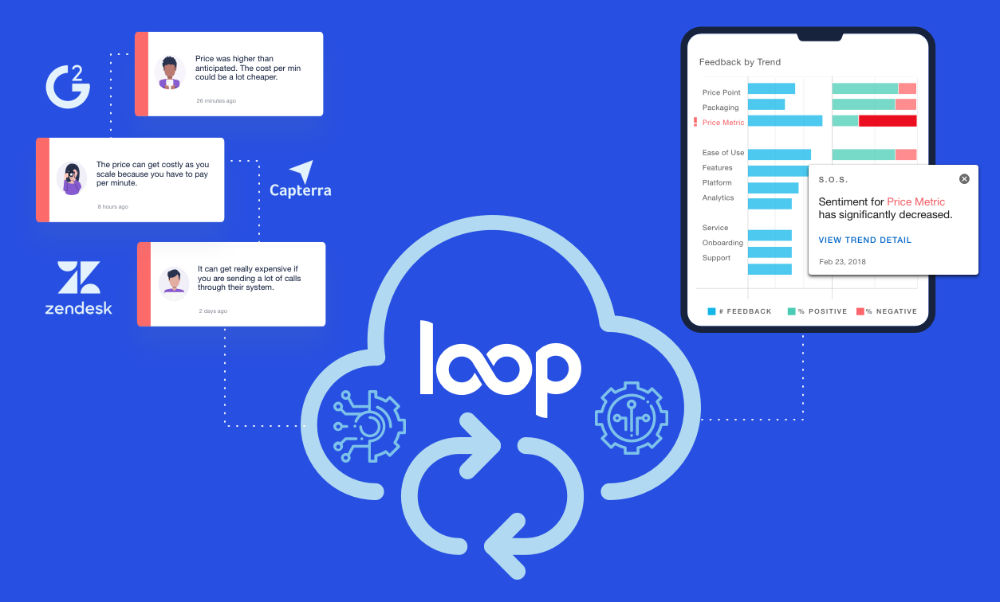Home » How a Product Marketing Team Navigates COVID-19 with Customer-First Strategies
How a Product Marketing Team Navigates COVID-19 with Customer-First Strategies
Madeline Turner

These are unprecedented times and the economic impact touches all of us in B2B SaaS. For many, pipeline has stalled, customers have churned, and the scope of “critical tools” has narrowed.
This situation has forced companies to look inward and reevaluate the value they’re delivering to customers through this time. Our responsibility has shifted from retaining customers by offering a great customer experience to retaining customers by offering unmatched value.
For CallRail, this has meant taking a deep look into feedback to understand customer needs and business opportunities. CallRail offers tracking and analytics for phone calls and webforms to small to medium businesses, which have been severely and significantly impacted by COVID-19 and the economic downturn. Strategies and priorities from a month ago are now obsolete and their central focus has become helping their customers survive these uncertain times.
Analyzing Feedback to Identify Customer Needs
To do this effectively, CallRail has begun analyzing and segmenting customer feedback to determine where customers find the most value in their products. They’re pulling customer feedback from places like Zendesk Satisfaction Surveys, NPS responses, and online reviews. This data helps them understand both the risks and opportunities across their customer base and provides direction for the strategic actions that must be prioritized.
Their teams have begun meeting daily to discuss primary customer issues and pivot strategies based on the greatest need.
The focus of these meetings is to understand:
- What do customers need right now?
- What offers need to be created or made available to get them through this time?
Understanding Risks and Opportunities at Scale
Analyzing large volumes of customer feedback manually would have been prohibitive to CallRail’s ability to move quickly. Rather than dedicating resources to manually tagging individual pieces of feedback, CallRail is relying on natural language processing to auto-categorize feedback by topic and by sentiment.
This allows their team to get to the root of product value gaps in near real-time so that they can focus efforts on solving problems rather than identifying them. Already, this has saved their Advocacy team 2-3 hrs of manual feedback analysis and provided them with the data they need to drive the biggest impact for their customers.
The biggest trends they identified in Zendesk support tickets were around pricing, pausing, and requests for temporary relief options. They realized that in order to best support customers right now, they’d need to roll out offers and pricing plans that fit the current needs of their customers. In three days, CallRail built pausing account functionality that would give customers the ability to better control spend. They also put together temporary relief pricing plans that make it possible for customers to continue critical work while also protecting resources.
Additionally, they’ve switched their entire focus from being about acquiring new customers to retaining and taking care of existing customers. Every strategy has been reevaluated through the lens of the current environment. If it isn’t something that is truly helpful for their customers right now, they’ve paused or repositioned the approach.
During these unprecedented times, when organizations are tasked with evaluating their tech stack and eliminating non-essential costs, delivering value to customers quickly is critical to survival. Now CallRail has access to the information they need to respond to customer needs at scale, driving value for customers and results for their bottom line.
Replicating CallRail’s Success Strategy at Your Company
- Identify the voice of customer stakeholders across your organization. Bring together representatives from Marketing, Sales, Customer Success, Customer Support, and Product to ensure that the entire company stays tightly aligned on risks, opportunities, and agreed-upon actions.
- Audit channels and collect customer feedback in one place. Bring together customer feedback that your company is already receiving on a daily basis. Things like customer support tickets, online reviews, qualitative feedback from sales or success calls.
- Use simple and affordable tools to analyze feedback at scale. Tools like LoopVOC can help your team save time and resources by giving your team customer feedback analytics and insights in real-time. [Try for free].
- Set up a regular cadence for check-ins. Whether it is daily or weekly, create a cadence to meet regularly to discuss the most pressing customer issues and needed actions.
- Take action. Make changes, pivot strategies, and focus on driving value for your customers as quickly as possible. Consider new offers, services, and value-driven resources that your team can provide right now.
- Measure the impact of actions. Ensure that the steps you’re taking are having a measurable impact on your customers. Identify the core KPIs that matter most to your business and report out regularly. Continue pivoting as needed.



